It’s a Cascade of 14nm CPUs: AnandTech’s Intel Core i9-10980XE Review
by Dr. Ian Cutress on November 25, 2019 9:00 AM ESTGaming: F1 2018
Aside from keeping up-to-date on the Formula One world, F1 2017 added HDR support, which F1 2018 has maintained; otherwise, we should see any newer versions of Codemasters' EGO engine find its way into F1. Graphically demanding in its own right, F1 2018 keeps a useful racing-type graphics workload in our benchmarks.
We use the in-game benchmark, set to run on the Montreal track in the wet, driving as Lewis Hamilton from last place on the grid. Data is taken over a one-lap race.
All of our benchmark results can also be found in our benchmark engine, Bench.
| AnandTech | IGP | Low | Medium | High |
| Average FPS | 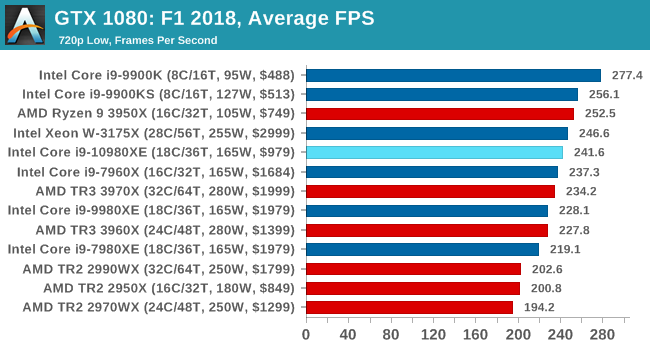 |
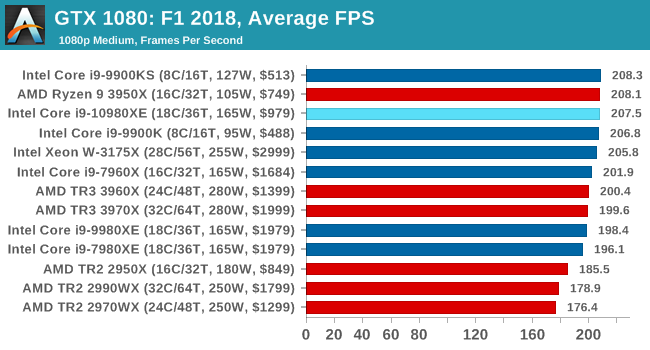 |
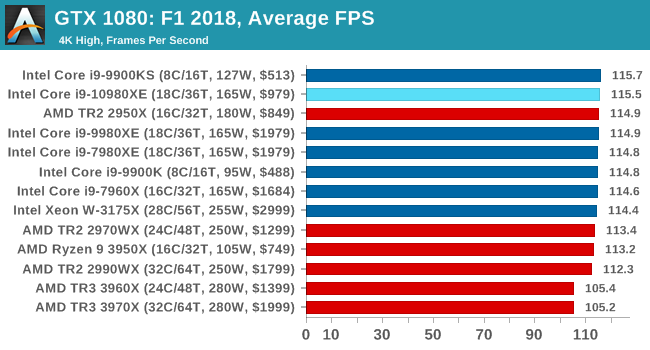 |
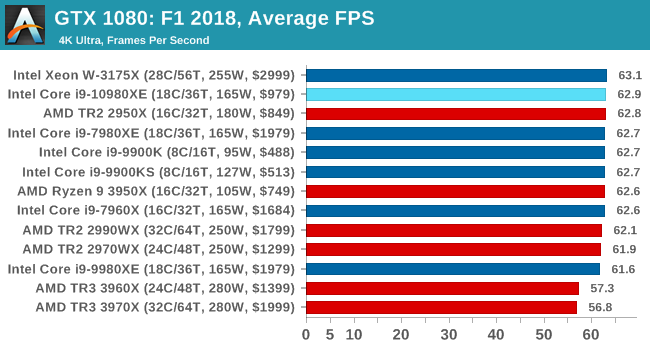 |
| 95th Percentile | 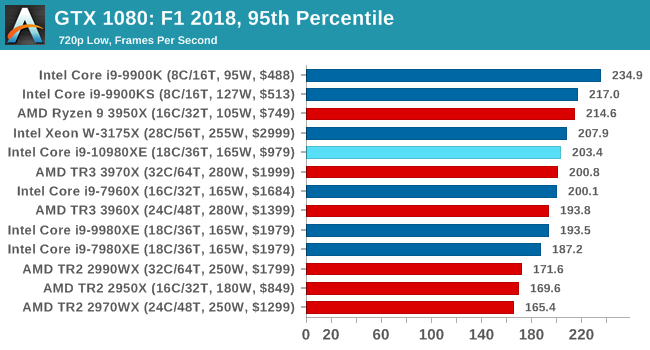 |
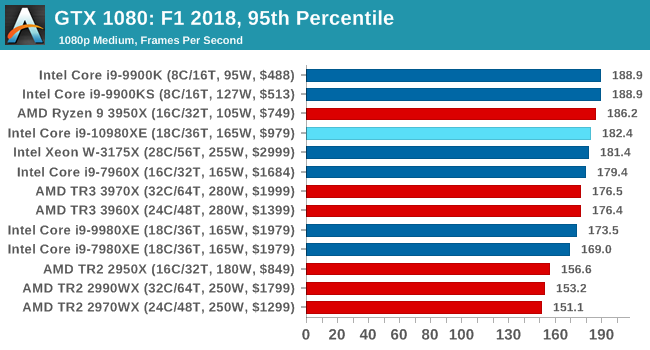 |
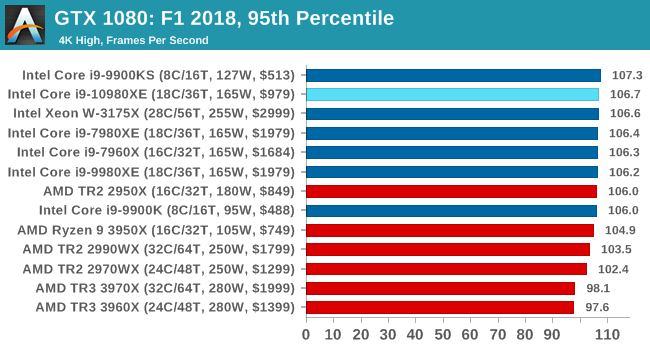 |
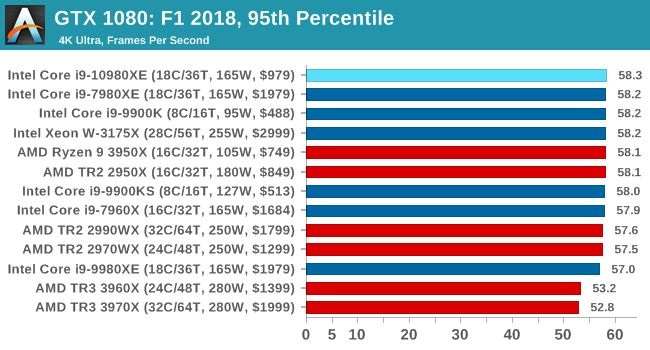 |












79 Comments
View All Comments
Santoval - Monday, November 25, 2019 - link
Wait for the prices of both to adjust first.Drumsticks - Monday, November 25, 2019 - link
I don't care about process nodes, as long as they're delivering competitive prices, core counts, and performance per core. Intel's not quite out of the game yet since AMD's HEDT goes higher than Intel's, but they've gotten smashed at the halo spot, and they won't be able to deliver on price and performance if they can't get something in order.Braincruser - Tuesday, November 26, 2019 - link
No they haven't been "smashed at the halo spot". The 3900X and 3950X are both beasts and both shred in most of the important benchmarks. For video rendering both the 3900x and 3950X hand out with both the threadrippers and the intels. You get 90% of the performance for 1/4th the price. 12-16 cores is also a very important number for programmers, since you have enough CPUs for compiling, and running 2-3 VMs comfortably.Dolda2000 - Monday, November 25, 2019 - link
Why is it that Intel gains so incredibly much more from AVX512 than AMD gains from AVX2?In the 3DPM2 test, the AMD CPUs gain roughly a factor of two in performance, which is exactly what I'd expect given that AVX2 is twice as wide as standard SSE. The Intel CPUs, on the other hand, gain almost a factor of 9, which is more than twice what I'd expect given that AVX512 as four times as wide as SSE.
What causes this? Does AVX512 have some other kind of tricks up its sleeves? Does opmasking benefit 3DPM2?
Xyler94 - Monday, November 25, 2019 - link
Basically, AVX-512 is double the performance of AVX2 (or another way to see it, 256bit vs 512bits, which 512 is double 256). So anything optimized for 512 will be about double in speed from 256, even on the exact same processor.Xyler94 - Monday, November 25, 2019 - link
To note: That's a highly overly simplistic view of it, there's a lot more under the hood.eek2121 - Monday, November 25, 2019 - link
Well that and the obvious point that AMD CPUs do not support AVX-512.DanNeely - Monday, November 25, 2019 - link
AVX-2 is 256 bits wide, and thus only does have as much/instruction as AVX-512.JayNor - Monday, November 25, 2019 - link
I believe for 10 cores and up there are dual avx512 units per core. You can see the dual avx512 units in the Execution Engine diagram at this link.https://en.wikichip.org/wiki/intel/microarchitectu...
Also, cascade lake added dlboost 8 bit operations in avx512 to support ai inference convolutions.
Dolda2000 - Monday, November 25, 2019 - link
But Zen 1/2 also has two 256-bit FMAs per core. And Intel also has two SSE units per core as well, so I don't see how that would explain the ratios.